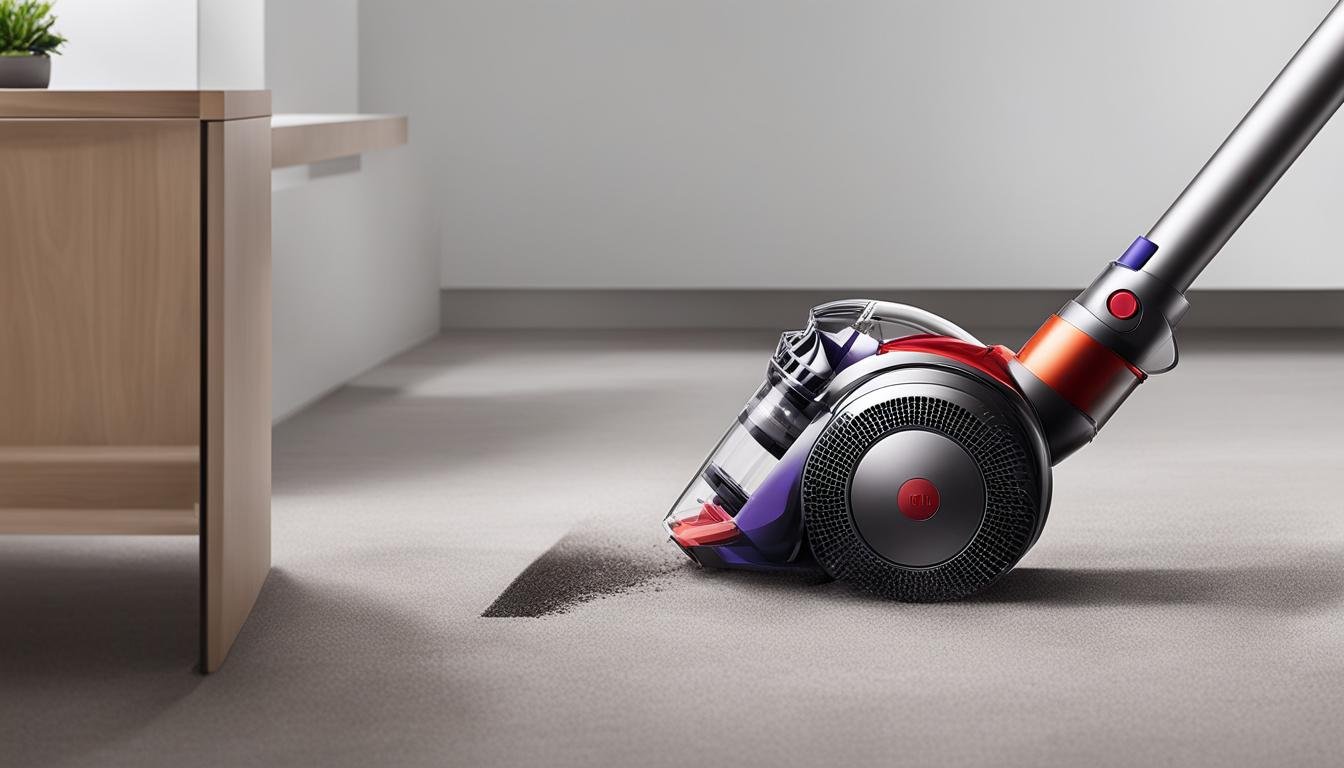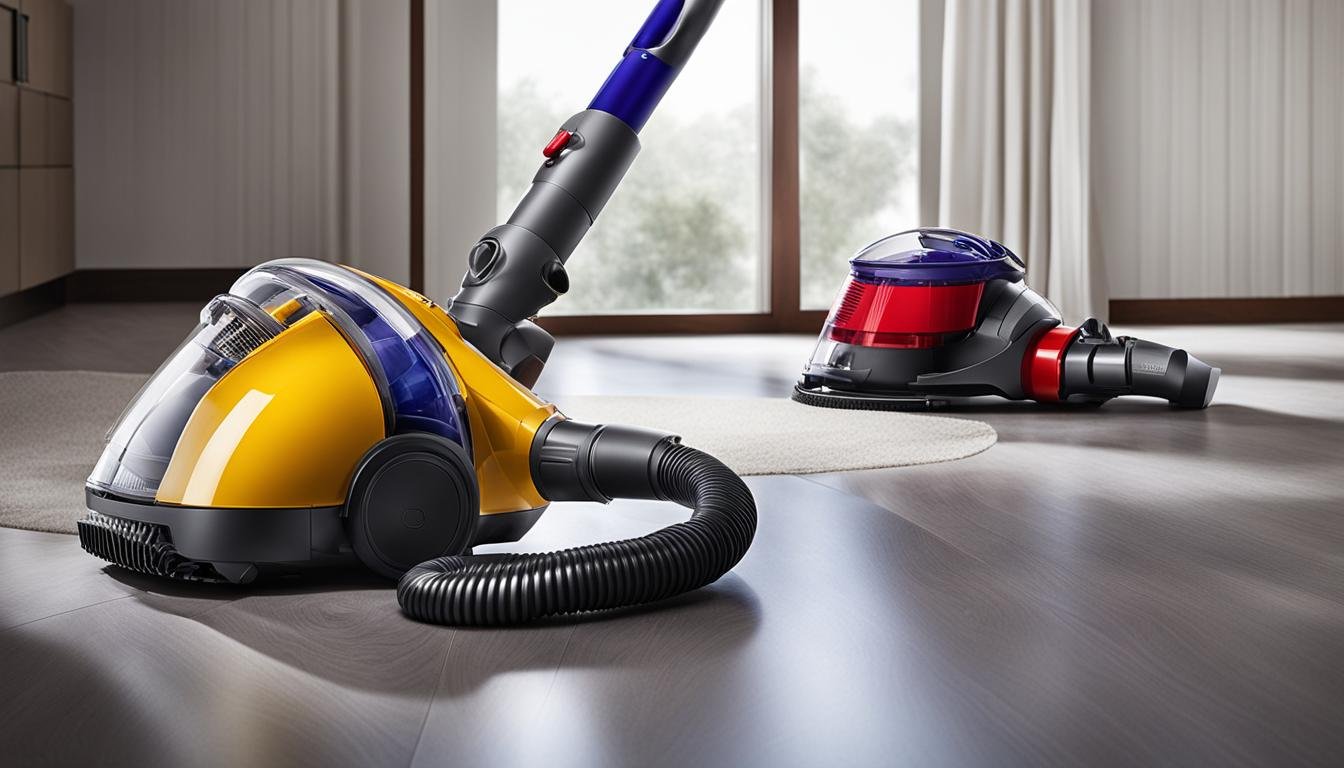I recently came across a question that many people have been wondering about – do vacuum cleaner bags contain asbestos? With the increased awareness surrounding the dangers of asbestos exposure, it’s important to address this concern and provide accurate information.
According to reliable sources, the likelihood of vacuum cleaner bags containing asbestos is highly unlikely. Vintage vacuum cleaner bags were typically made of plain finely woven cotton, with no asbestos fibers present. Asbestos was more commonly used in items that generate heat, such as irons, electric fires, and hair dryers. Therefore, the risk of asbestos exposure from vacuum cleaner bags is considered to be low.
Key Takeaways:
- Vacuum cleaner bags are unlikely to contain asbestos.
- Asbestos was more commonly used in appliances that generate heat.
- The risk of asbestos exposure from vacuum cleaner bags is considered low.
- It’s important to properly handle and dispose of any damaged or old appliances that may contain asbestos.
- Regular maintenance and cleaning of appliances can help minimize any potential asbestos exposure.
Asbestos in Household Appliances
While it may be unlikely for vacuum cleaner bags to contain asbestos, there have been instances of asbestos being used in other household appliances. In the past, asbestos was commonly used as an insulating and fireproofing material in various appliances. This included stoves, ovens, toasters, slow cookers, coffee pots, bottle warmers, popcorn poppers, dishwashers, washing machines, dryers, heaters, ironing boards, curling irons, and hair dryers. For some appliances, such as hair dryers, the insulation around the heating element often contained asbestos.
It’s important to note that the risk of asbestos exposure from these appliances is generally low unless they are damaged or taken apart. However, it is crucial to be aware of the potential presence of asbestos in older appliances or those manufactured before stricter regulations were implemented.
The Dangers of Asbestos in Household Appliances
Asbestos is a harmful mineral that can cause serious health issues when its fibers are inhaled or ingested. Prolonged exposure to asbestos can lead to diseases such as asbestosis, lung cancer, and mesothelioma. The microscopic fibers released from damaged or deteriorated asbestos-containing materials can easily become airborne, posing a risk to anyone in the vicinity.
While the use of asbestos in household appliances has significantly decreased over the years, older appliances may still contain this hazardous material. Therefore, it is essential to take precautions when dealing with or disposing of these appliances to minimize the risk of asbestos exposure.
| Appliance | Potential Asbestos Components |
|---|---|
| Stoves and Ovens | Insulation, gaskets |
| Toasters | Insulation, heating element components |
| Dishwashers | Insulation, sealants |
| Heaters | Insulation, internal components |
| Hair Dryers and Curling Irons | Insulation around the heating element |
It is crucial to handle these appliances with care, especially when renovating or disposing of them. If you suspect your appliances may contain asbestos, it is recommended to consult with professionals who specialize in asbestos removal and disposal.
By being aware of the potential presence of asbestos in household appliances, you can take the necessary precautions to protect yourself and your family from exposure. Regular maintenance and proper handling of older appliances are essential to minimize any risks associated with asbestos-containing materials.
Minimizing Asbestos Exposure in the Home
While the use of asbestos in household appliances has declined significantly, it is still crucial to take precautions to reduce asbestos exposure in your home. Asbestos, a fibrous mineral known for its heat resistance and durability, was commonly used in construction materials and household products until its harmful effects on health became known.
To avoid asbestos exposure, it is essential to be aware of potential sources of asbestos in your home. Older homes, especially those built before the 1980s, may contain asbestos in various areas such as insulation, floor tiles, ceiling tiles, and pipe coverings. It is important to avoid disturbing these materials, as they can release harmful asbestos fibers into the air.
If you suspect the presence of asbestos-containing materials in your home, it is best to consult with a trained professional to assess the situation. They can conduct a thorough inspection and safely remove or encapsulate any asbestos materials to minimize the risk of exposure.
Furthermore, it is important to ensure proper ventilation in your home, as good airflow helps prevent the accumulation of asbestos fibers. Regularly cleaning and dusting your living spaces can also help reduce the risk of asbestos exposure, as it removes settled dust that may contain asbestos particles.
FAQ
Do vacuum cleaner bags contain asbestos?
According to sources, it is highly unlikely that vacuum cleaner bags contain asbestos. Vintage vacuum cleaner bags were typically made of plain finely woven cotton with no asbestos fibers present.
Are vacuum cleaner bags made with asbestos?
No, vacuum cleaner bags are not made with asbestos. The risk of asbestos exposure from vacuum cleaner bags is low.
Are there dangers of asbestos in vacuum bags?
The risk of asbestos exposure from vacuum cleaner bags is generally low. It is unlikely for vacuum cleaner bags to contain asbestos.
Is asbestos present in other household appliances?
In the past, asbestos was commonly used as an insulating and fireproofing material in various household appliances, including stoves, ovens, toasters, dishwashers, washing machines, dryers, heaters, ironing boards, curling irons, and hair dryers. However, the use of asbestos in household appliances has significantly declined.
How can I minimize asbestos exposure in the home?
To minimize asbestos exposure in the home, it is important to take precautions such as avoiding damaging or taking apart household appliances that may contain asbestos insulation. Additionally, if you have older appliances that may contain asbestos, it is best to consult with professionals for proper handling and disposal.





Leave a Reply